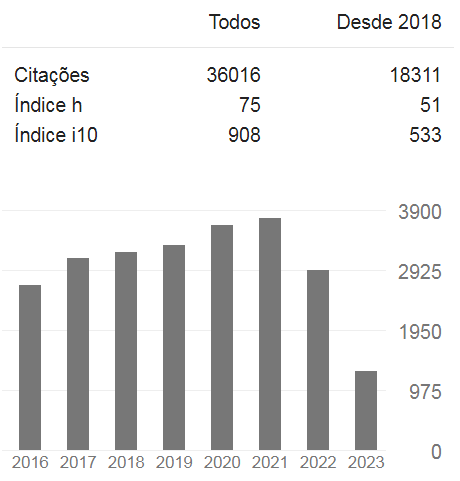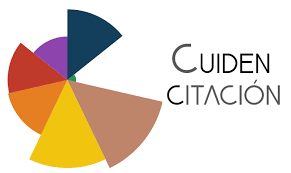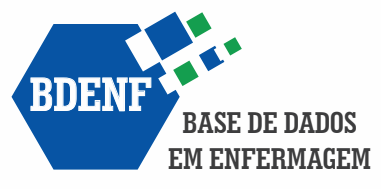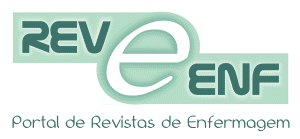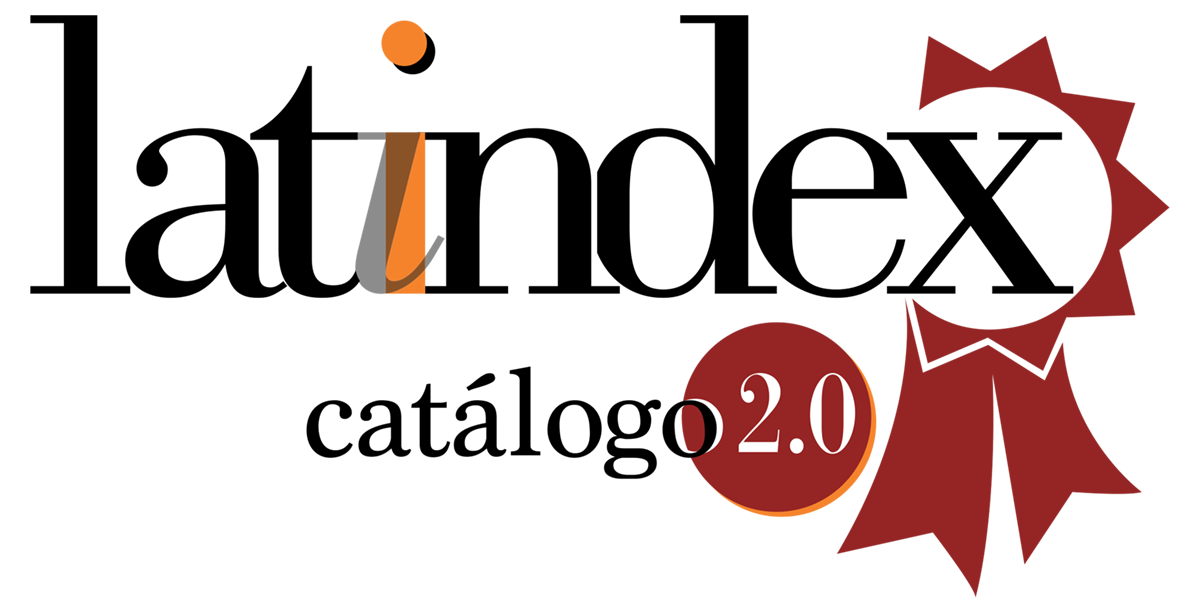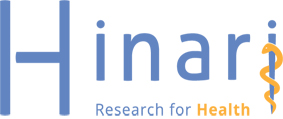Knowledge about patient hospital care received during your admission
DOI:
https://doi.org/10.5935/1415-2762.20160048Keywords:
Communication, Patient Participation, Patient Care Team, Patient Safety, NursingAbstract
This study aimed to identify the patient’s knowledge about their health status and related hospital care during the hospital stay. There was a descriptive, cross-sectional, quantitative study conducted in two inpatient units of a public teaching hospital in the state of Paraná, Brazil. Data were collected in the period from June to August on a probability sample (n = 165) of eligible patients, using a specific form, previously evaluated and tested for extraction of self-reported patient knowledge about their health problem and assistance hospital waived, as well as documentary source records. The tabulated data, it proceeded descriptive statistical analysis in proportion measures. Most users know their medical diagnosis (73.94%); proposed treatment (82.42%); and knew which proceeded tests (87.84%). In contrast, unaware of the test results (70.91%); the maid drug therapy (80.14%), and indications and risks (51.52%). The doctor was professional legitimized with the highest proportion (40%) as a provider of information during hospitalization. It was concluded that the patient’s knowledge in the hospital system is still a loss-making phenomenon, since it is limited only to the most basic aspects of their health problem, corroborating its passivity in attention, and possibly reducing its stake in caution.
References
Ministério da Saúde (BR). Conselho Nacional de Saúde. Carta dos direitos dos usuários da saúde. 3ª ed. Brasília: Ministério da Saúde; 2011.
Clinco SDO. Participação do usuário no seu cuidado: realidade ou ficção? [tese]. São Paulo: Escola de Administração de Empresas de São Paulo; 2013. [citado em 2016 jun. 26]. Disponível em: http://bibliotecadigital.fgv.br/dspace/bitstream/handle/10438/10675/Tese%20Sandra%20Clinco%20versao%20definitiva%20abril2013.pdf?sequence=1
Ministério da Saúde (BR). Programa Nacional de Segurança do Paciente. Documento de referência para o Programa Nacional de Segurança do Paciente. Brasília: Ministério da Saúde; 2014.
Bohrer CD, Marques LGS, Vasconcelos RO, Oliveira JLC, Nicola AL, Kawamoto AM. Comunicação e cultura de segurança do paciente no ambiente hospitalar: visão da equipe multiprofissional. Rev Enferm UFSM. 2016[citado em 2016 jun. 26];6(1):50-60. Disponível em: http://periodicos.ufsm.br/reufsm/article/view/19260
Moura GMSS, Inchauspe JAF, Dall'Agnol1 CM, Magalhães AMM, Hoffmeister LV. Expectations of the nursing staff in relationship to leadership. Acta Paul Enferm. 2013[citado em 2016 jun. 26];26(2):198-204. Disponível em: http://www.scielo.br/pdf/ape/v26n2/en_v26n2a15.pdf
Santos MCS, Bernardes A. Comunicação da equipe de enfermagem e a relação com a gerência nas instituições de saúde. Rev Gaúcha Enferm. 2010[citado em 2016 jun. 26]; 31(2):359-66. Disponível em: http://www.scielo.br/scielo.php?script=sci_arttext&pid=S1983-14472010000200022&lng=en&nrm=iso
Nadzam DM. Nurses' role in communication and patient safety. J Nurs Care Qual. 2016[citado em 2016 jul. 26];24(3):184-8. Disponível em: 2009; http://medprolifeline.com/docs/David/Nurses_Role_in_Communication_and_Patient_Safety3.pdf
Pinheiro GF, Silqueira SMF, Correa AR, Donoso MTV, Loureiro FI. Knowledge of coronary heart disease patients regarding coronary artery disease: implications for secondary prevention. J Nursing UFPE. 2014[citado em 2016 jul. 18];8(12). Disponível em: http://www.revista.ufpe.br/revistaenfermagem/index.php/revista/article/view/5334
Costa SDC. Saúde do homem: atuação do enfermeiro. Vitória: Faculdade Católica Salesiana do Espírito Santo; 2014. [citado em 2016 jun. 26]. Disponível em: http://www.catolica-es.edu.br/fotos/files/TCC_2014-2_Silvana.pdf
Caponero R. A comunicação médico-paciente no tratamento oncológico. Belo Horizonte: Clinonco e MG Editores; 2015. [citado em 2016 jun. 26]. Disponível em: http://www.gruposummus.com.br/indice/50113.pdf
Wachter RM. Compreendendo a segurança do paciente. 2ª ed. Rio de Janeiro: AMGH; 2013. [citado em 2016 jun. 26]. Disponível em: http://webcache.googleusercontent.com/search?q=cache:9PcuQa-K0OQJ:www.revista.ufpe.br/revistaenfermagem/index.php/revista/article/download/6383/10159+&cd=2&hl=pt-BR&ct=clnk&gl=br
Hoffmann CT, Del Mar C. Patients' expectations of the benefits and harms of treatments, screening, and tests a systematic review. JAMA Intern Med. 2015[citado em 2016 jun. 26];175(2):274-86. Disponível em: http://archinte.jamanetwork.com/article.aspx?articleid=2038981#Introduction
Silva LD, Camerini FG. Análise da administração de medicamentos intravenosos em hospital da rede sentinela. Texto Contexto Enferm. 2012[citado em 2016 jun. 26];3(21):633-41. Disponível em: http://www.scielo.br/scielo.php?script=sci_arttext&pid=S010407072012000300019&lng=en&nrm=iso
Baptista SCF. Análise de erros nos processos de preparo e administração de medicamentos em pacientes pediátricos [dissertação]. Rio de Janeiro: Escola Nacional de Saúde Pública Sérgio Arouca . Rio de Janeiro: ENSP, FIOCRUZ; 2014. [citado em 2016 jun. 26]. Disponível em: http://bases.bireme.br/cgi-bin/wxislind.exe/iah/online/?IsisScript=iah/iah.xis&src=google&base=LILACS&lang=p&nextAction=lnk&exprSearch=719637&indexSearch=ID
Souza VS. Errors and adverse events: the interface with health professionals' safety culture. Cogitare Enferm. 2015[citado em 2016 jun. 26]; 20(3):474-81. Disponível em: http://ojs.c3sl.ufpr.br/ojs2/index.php/cogitare/article/view/40687/26259
Conselho Federal de Medicina. Código de Ética Médica. Resolução nº 1931/2009. Brasília: CFM; 2009. [citado em 2016 jun. 26]. Disponível em: http://www.portalmedico.org.br/novocodigo/integra.asp
Zem KKS, Cardoso FS, Montezeli JH. O agir comunicativo do enfermeiro na assistência ao paciente criticamente enfermo. Rev Enferm UFSM. 2013[citado em 2016 jun. 26];3(3):547-54. Disponível em: http://cascavel.ufsm.br/revistas/ojs-2.2.2/index.php/reufsm/article/view/7419/pdf
Zani AV, Marcon SS, Tonete VLP, Parada CMG. Processo comunicativo no pronto socorro entre a enfermagem e pacientes: representações sociais. OBJN. 2014[citado em 2016 jun. 26];13(2):139-49. Disponível em: http://www.objnursing.uff.br/index.php/nursing/article/download/.../pdf_115
Downloads
Published
Issue
Section
License
Copyright (c) 2017 Reme: Revista Mineira de Enfermagem

This work is licensed under a Creative Commons Attribution 4.0 International License.



